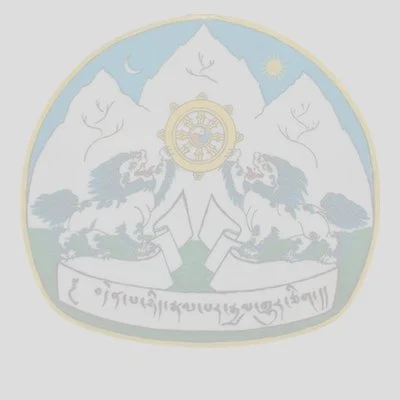
Introduction
Mainpat Phendeyling Tibetan Settlement was first Tibetan settlement established by the Government of India in 1962 to rehabilitate 1400 Tibetan refugees who have come to India in the aftermath of the Chinese annexation of Tibet in 1959.
The land was made available by the State government of Madhya Pradesh and the Indian Govt. financed the scheme. Mainpat Agricultural settlement followed the same line of development as the agricultural settlement, which had been previously established at Bylakuppe in Karnataka. In case of Mainpat, necessary arrangements such as temporary huts and rations etc could not be made prior to the arrival of the settlers and as a result had to face much initial hardships.
Settlement Location:
The settlement is located at Mainpat in Surguja District of Chattisgarh State in the central region of India. The nearest town, Ambikapur is 50 km from it but the condition of the road is absolutely drive’s nightmare and putting the driving skill to the test. Ambikapur is medium size town thriving on vast hinterland of agricultural villages and rich mining industries. It has sufficiently good and adequate health, telecommunication and other service sector. The nearest railhead is Raigarh, which is about 350 kms from the settlement. The settlement is about 300 km from Varanasi, which has flight connection to other parts of the country. The general topography of the settlement area is on a tableland at the average elevation of 3500 ft above sea level.
Settlement Population
No of Villages:
The Settlement consists of 7 camps scattered within a radius of 25 kms with an average distance of about 5 to 6 Kms from each other. The camp no.1 is so to say locationally and also functionally central camp. The school, settlement office, co-operative society, workshop and health clinics are all located here. Even then distance between the outermost camps and the camp-I is more than 15 kms which makes the accessibility to services difficult. The camps are connected to each other by unpaved dirt roads which turns into virtual cesspool during the rainy season.
Settler’s Livelihood:
Most of the original families have a small piece of agricultural land for their living. Due to lack of irrigation facilities, the rain fed crop agriculture is practiced, which is not sufficient to sustain the families on farming alone. Besides agricultural, the settlers are engaged in trading, restaurants, shop keeping, and seasonal sweater selling etc.
Facilities in the settlement
| School | One Crèche 4 Kindergartens one Middle school |
|---|---|
| Health facilities | It has one allopathic dispensary one Tibetan herbal medicine clinic |
| Elderly People Home | One elderly people home with 27 elders |
| Monastery | The settlement has 3 monasteries |
| Co-operative Society |
The settlement has Co-operative Society looks after the supply of seeds, fertilizers and tractarization of their fields and the farmers repay these credit facilities in kind. The co-operative Society also helps market their produce, mainly maize. Like co-operative Societies in other refugee’s settlement, this co-operative is also consisted of self-team of, one co-operative secretary appointed by CTA, accountant cashier and in charges. Under the management of the Co-operative Societies there are five shops, a dairy farm and a mechanical workshop, dairy, truck section, low cost Building Center, Handicraft centers have been set up to provide employment, to preserve the Tibetan tradition carpet weaving, and to generate the income for the co-operative societies. |
Administrative setup
Representative:
Each settlement has a settlement officer who is the Representative of the Department of Home appointed by Central Tibetan Administration (CTA), Dharamsala. Settlement officer is the principle post of the settlement. He is charged with overall control of running of affairs in the settlement. Under the Representative there are chief executive officer Co-operative society, appointed by CTA, Manager of the workshop and other small handicraft and also village leaders.
Representative acts as the liaison between the settlement and the Department of Home (CTA) and is the main source of information for the people in the settlement. The roles of Chief Diplomat, Chief Justice and Head of the settlement are all combined in one post. Daily task for the representative range from adjudicating disputes to communicating with group leaders and outside authorities, and generally watching over the running of all aspects of the settlement.
Group Leaders:
The functioning or activities of every settlement are more or less similarly to each other. There are 7 villages in this settlement and each of these 7 villages possess an elected group leaders whose job is to act as an intermediary with relevant authorities, pass on information, settle disputes and collect money. Group leaders are not elected for their policy-making idea, nor do they campaign on certain issue. These group leaders are chosen on the basis of their strength of personality and once ability to stand before the interest of their village. The duty of the leader is more or less like the representative, but on smaller and more personal scale.
Traveling Mode
| Nearest Railway station | Bishrampur | 75 Km from Settlement |
|---|---|---|
| Nearest Air port | Raipur | 550 Km from settlement |
